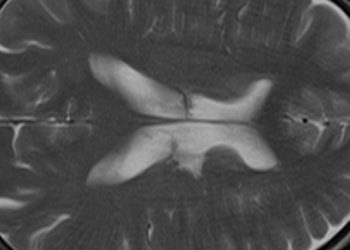2 Minute Medicine Rewind June 6, 2016
Variant ASGR1 Associated with a Reduced Risk of Coronary Artery Disease
Genome sequence variants are known to have effects on serum levels of non-HDL cholesterol, a better predictor of cardiovascular risk than low-density lipoprotein (LDL) cholesterol. The purpose of this study was to test for associations between genome variants and non-HDl cholesterol levels. The authors sequenced the genomes of 2636 Icelanders and found variants that they imputed into the genomes of approximately 398,000 Icelanders. They tested for associations between these imputed variants and non-HDL cholesterol levels in 119,146 samples and assessed the effects of an implicated loss-of-function variant on the risk of coronary artery disease. The authors found a 12-base pair deletion (del12) in intron 4 of ASGR1 (a subunit of the asialoglycoprotein receptor plays a role in the homeostasis of circulating glycoproteins) which leads to a frameshift mutation that results in a truncated protein prone to degradation. In the tested population, heterozygous carriers of the mutation had a lower level of non-HDL cholesterol than noncarriers, a difference of 15.3 mg per deciliter and a 34% lower risk of coronary artery disease (p = 4.0 x10-6). They also found another loss-of-function ASGR1 variant, p.W158X, that was associated with lower levels of non-HDL cholesterol (p = 1.8 x 10-3). The results of this analysis provide evidence that variants in ASGR1 have an effect on lowering non-HDL cholesterol levels and reducing the risk of coronary artery disease.
The purpose of this longitudinal cohort study was to explore the associations between cannabis use between the ages of 18 to 38 and future physical health indexes at early midlife 20 years later. The authors used 1037 individuals from a birth cohort in Dunedin, New Zealand, in 1972 and 1973 and followed them to 38 years of age. They controlled for tobacco use, childhood health, and childhood socioeconomic status and tested whether cannabis use from ages 26 to 38 years was associated with within-individual health decline. The primary outcomes were laboratory measures of physical health (periodontal health, lung function, systemic inflammation, and metabolic health), as well as self-reported physical health, between the ages 26 and 38 years. The authors found that cannabis use was associated with poorer periodontal health at age 38 years and within-individual decline in periodontal health from ages 26 to 38 years, even after controlling for tobacco pack-years (β = 0.12; 95% CI, 0.05-0.18; p <.001). Importantly, the authors also found that use of cannabis was unrelated to other physical health problems. Compared to cannabis use, tobacco use was associated with worse lung function, systemic inflammation, and metabolic health at age 38 years, as well as within-individual decline in health from ages 26 to 38 years. Therefore, the results of this study provide evidence that a 20 year use of cannabis is not associated with many physical health problems in early midlife compared to tobacco use, except periodontal disease.
Point of Health Care Entry for Youth With Concussion Within a Large Pediatric Care Network
Limiting concussion epidemiologic research to those patients presenting to either sport concussion clinics or emergency departments (ED) misses many concussion cases. The purpose of this descriptive epidemiologic study was to comprehensively describe point of entry for children with concussion, overall and by relevant factors including age, sex, race/ethnicity, and payer, to better quantify where children initially seek care for this injury. Data were collected from primary care, specialty care, ED, urgent care, and inpatient settings. The primary outcome was frequency of initial concussion visits at each type of health care location. The authors found that 81.9% of patients had their first visit at The Children’s Hospital of Philadelphia’s (CHOP) network within primary care, 5.2% within specialty care, and 11.7% within the ED. Characterizing entry by age, a total of 52% of children between the ages of 0 to 4 years entered CHOP via the ED, whereas more than three-quarters of those aged 5 to 17 years entered via primary care. In addition, more Medicaid patients used the ED for concussion care. This descriptive epidemiologic study provide evidence that previous studies had underestimated the burden of concussion on the health care system when basing incidence solely on ED visits and sport concussion clinic visits as primary care is a significant entry point for children who underwent a concussion.
Next-generation sequencing for diagnosis of rare diseases in the neonatal intensive care unit
Exhaustive work-up in the neonatal intensive care unit (NICU) in the first few days of life is costly and sometimes fails to arrive at a final diagnosis for rare diseases. Next-generation sequencing may be a tool to avoid the aforementioned investigations to improve the diagnosis of rare diseases in newborns in the NICU. The authors retrospectively identified and prospectively recruited 20 newborns and infants admitted to the NICU of the Children’s Hospital of Eastern Ontario and the Ottawa Hospital, General Campus, who had been referred to the medical genetics or metabolics inpatient consult service and had features suggesting an underlying genetic or metabolic condition. Their DNA was sequenced on a MiSeq sequencing platform. The authors found that of the patient population, 8 received received a diagnosis on the basis of next-generation sequencing (diagnostic rate 40%). The diagnoses were renal tubular dysgenesis, SCN1A-related encephalopathy syndrome, myotubular myopathy, FTO deficiency syndrome, cranioectodermal dysplasia, congenital myasthenic syndrome, autosomal dominant intellectual disability syndrome type 7 and Denys-Drash syndrome. This pilot study provides evidence that next-generation sequencing has the potential to quickly identify rare and complex diseases in newborns in the ICU and transform the practice of clinical genetics. Given this is a early pilot study, further studies are needed in expanded cohorts to evaluate diagnostic rates for the varied clinical presentations seen in the NICU.
The purpose of this study was to assess whether disparity between race (black versus white) in stroke mortality is solely attributable to differences in incidence between the two races, versus a disparity in case fatality. Previous studies have documented a black-to-white mortality ratio over 3x greater between the ages of 45 to 54 years with a declining black-to-white mortality ratio at older ages. The authors used a total of 29 681 patients from the Reasons for Geographic and Racial Differences in Stroke (REGARDS) cohort to distinguish whether the black–white differences in stroke incidence or 30-day case fatality after stroke contribute to the disparities in stroke mortality. They found a similar pattern of stroke mortality compared to previous older studies. The black-to-white hazard ratio of ≈4.0 at age 45 years decreased to ≈1.0 at age 85 years. The pattern of black-to-white disparities in stroke incidence shows a similar pattern but no evidence of a corresponding disparity in stroke case fatality. Therefore, the results of this study demonstrate that the black–white differences in stroke mortality are mainly influenced by differences in stroke incidence, with case fatality only playing a minor role. The implication of this study helps to focus future stroke interventions to reduce this disparity as these interventions should be targeted on stroke prevention (i.e. to reduce incidence) in the black population.
Image: PD
©2016 2 Minute Medicine, Inc. All rights reserved. No works may be reproduced without expressed written consent from 2 Minute Medicine, Inc. Inquire about licensing here. No article should be construed as medical advice and is not intended as such by the authors or by 2 Minute Medicine, Inc.







